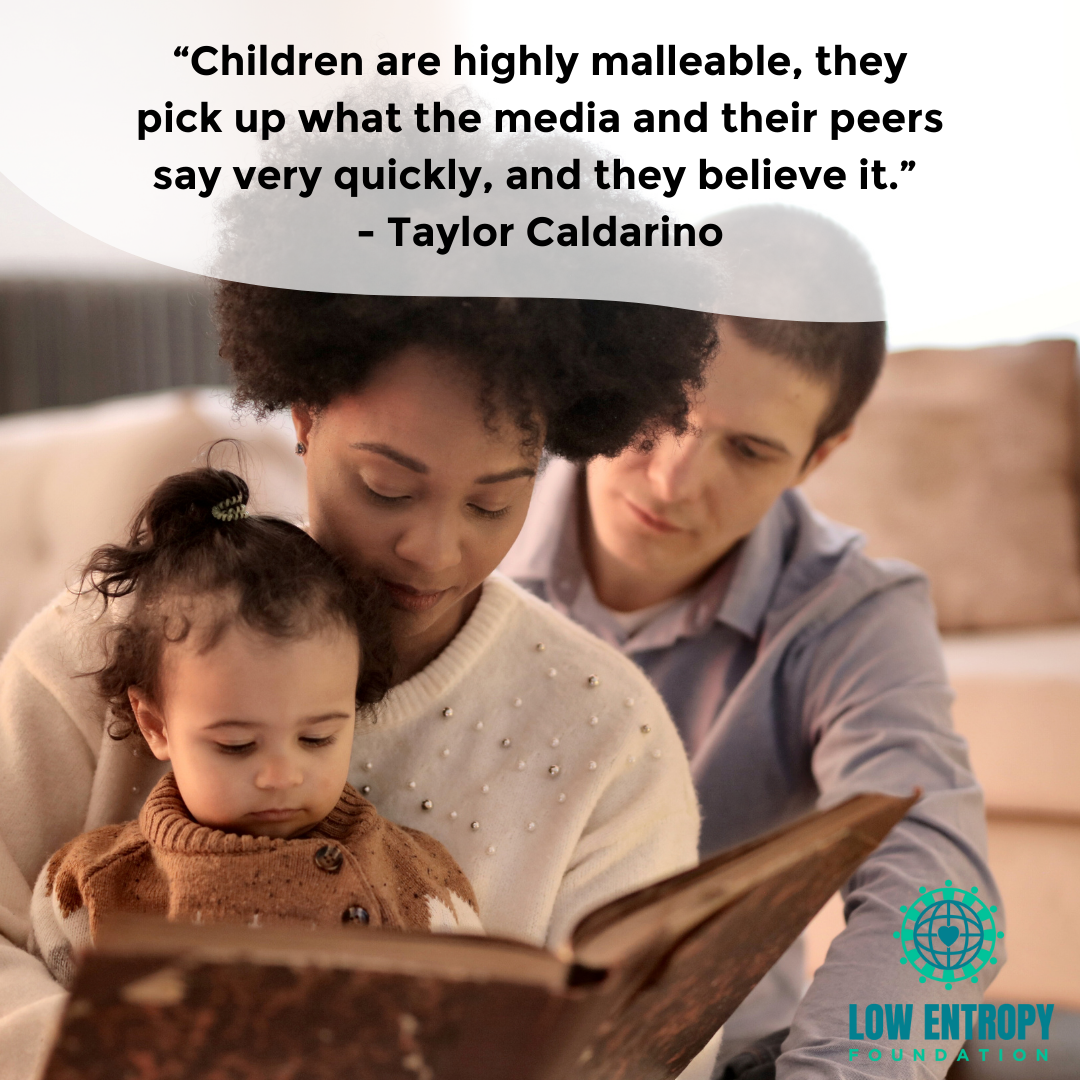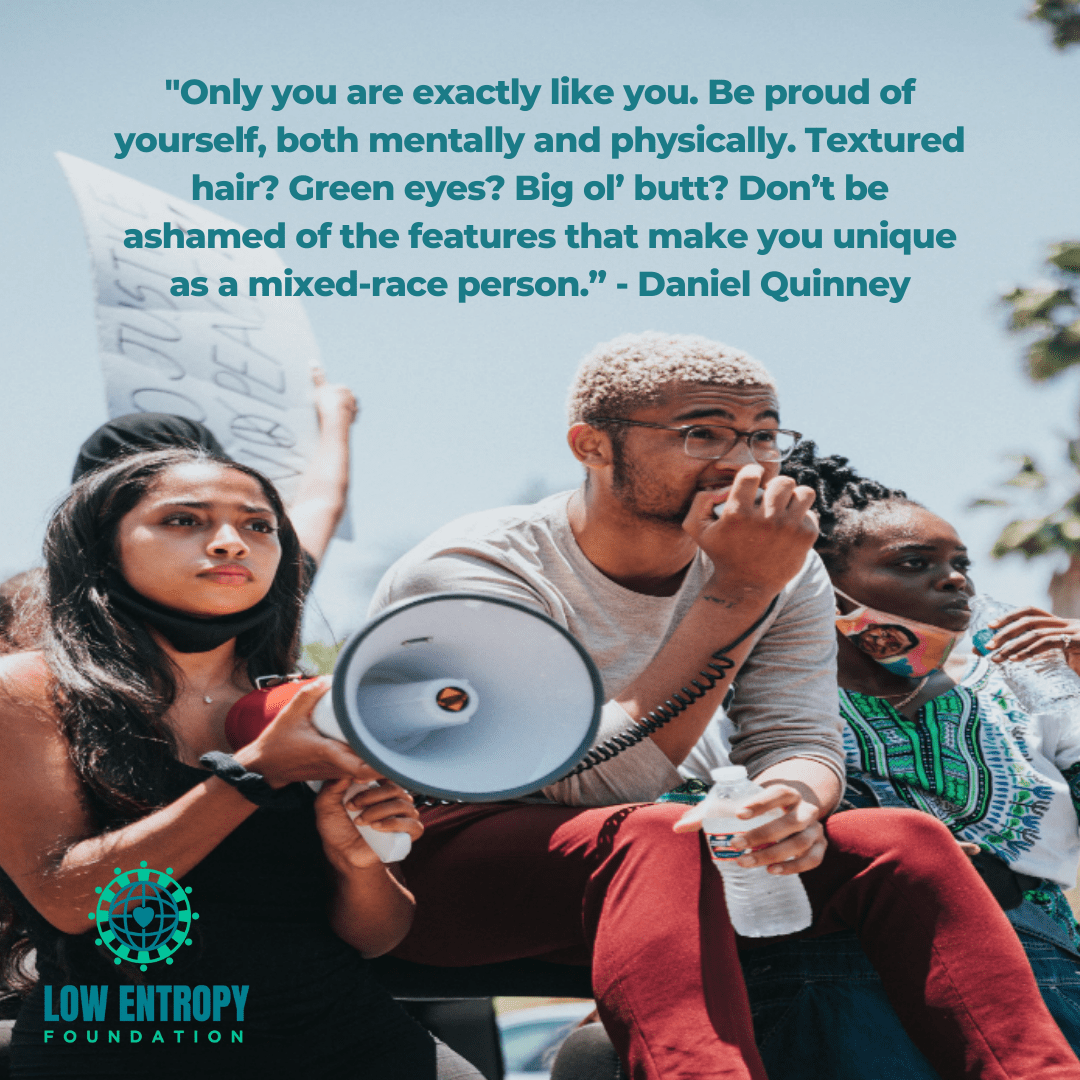Low Entropy Volunteer Writer Daniel Quinney’s mixed-race background has prompted the same set of conversational questions over and over again, but for a long time Daniel struggled with finding an answer to feeling disconnected and excluded. For anyone who has felt the same way in this increasingly polarized world, Daniel shares some ideas on how to create a space where you belong.
As an individual of biracial heritage with an Irish-Canadian mother and an African father, I have always struggled with the fact that I often feel that I come from two different worlds.
How can a person, with one parent from a dominant group in society and another from a racialized group, deal with the tension that arises from belonging to both groups? Or the unwelcome feeling that they belong to neither?
How do we find our voice to speak up and live our truth as only we can?
Too black for white people. Too white for black people.
I’ve heard these sentiments echoed often from people I know who have mixed-race backgrounds like mine.
When I was younger, people would ask, “So, what are you?” Of course, it would be game time for me at this point, so I would tell them that I am a person.
A human was also acceptable if I wanted to be extra cute.
So they would then ask, “Ok, but what is your nationality? “
I would say Canadian. They would come back with, “Yeah, yeah, but what is your ethnicity?”
I knew what they were getting at. Even though I was born in Vancouver, I would eventually relent and give them what they want.
Half-Tanzanian, half-Irish, I would say.
At an earlier age, I would have simply said half-African, but as time passed I think I wanted to up the level of difficulty a little (a bit of a pattern with me).
Yet ever since I found a deeper appreciation for the African side of my identity as a teenager, I often had this nagging feeling that half of me was on the wrong side of a conversation or dispute that had been going on long before I was born.
I gradually came to understand that people of all walks of life, of all colours, abilities, genders and orientations, can feel disconnected or without a sense of belonging in this world, and that I didn’t have a monopoly on that feeling of not fitting in. Over time, I found constructive ways to do something about what I was experiencing.
Along that journey, I developed coping mechanisms to give myself, as a biracial person, a sense of place and belonging in the world. I hope I have done an adequate job of passing these on to my children, and others as well.
- Love your uniqueness: Only you are exactly like you. Be proud of yourself, both mentally and physically. Textured hair? Green eyes? Big ol’ butt? Don’t be ashamed of the features that make you unique as a mixed-race person. Don’t hide what you are, embrace it. Forget about the so-called “traditional” standard of beauty; it’s a new world out there.
- Use your creative voice at work and within your community: Be vocal about the things you care about. Listen to the stories of other voices, other communities, other races. Support causes you truly believe in. If you are an artist of any kind, reflect that passion in your artwork, whatever it is, since it is a reflection of you and your thoughts.
- If you can’t give dollars, give your time: Give back to the generations that are coming up. Volunteer to be a mentor, or a tutor if you are an expert in your field. By the way, we are all experts in something. Time to pay it forward.
- Share your culture: Go to the festivals. Celebrate the customs of both cultures, whatever they may be. Talk about your history and the story of your family. Encourage strong ties with grandparents on both sides. Embrace and show off the things you enjoy about your culture(s) with your kids, and your friends too.
- It’s OK to not talk about race all the time: Not everyone is a Malcolm X or an Oprah or MLK or Obama, and that’s just fine. People define themselves in different ways, least of all by race, and that’s the way it should be.
- Don’t play the role or try to fit a stereotype: Find positive role models who look like you and embody the way you want to be and how you want to live. Trust me, they’re out there in abundance.
- Racist situations can be teaching opportunities: If people you encounter in everyday life say inappropriate or racist things, call it what it is . . . politely and in a nonviolent way. Safety is the priority, no matter what feelings get riled up in the heat of the moment. This is a time to show others the way to confront racism, so take advantage of it. Take emotions out of it, and just call it by name and say why it is wrong, but be safe.
- Take care of yourself: The endless race and culture debate, whether experienced first-hand in a spirited discussion with colleagues or through the media, can bring a kind of fatigue or numbness. When this occurs, in your personal life or out in the world, make sure to take some time out for yourself to reflect and heal.
- Be prepared to talk about the bad days as well as the good: Talk about racism, the legacy of slavery and other uncomfortable things, and in the process, you will educate others, both on the progress that has been made and how we still have to move forward. Truth is truth.
How has your race, ethnicity and/or nationality informed who you are? Share your stories with us on any of our social media platforms, in person at a Conscious Connections meeting, or simply hop down to the comments below!








